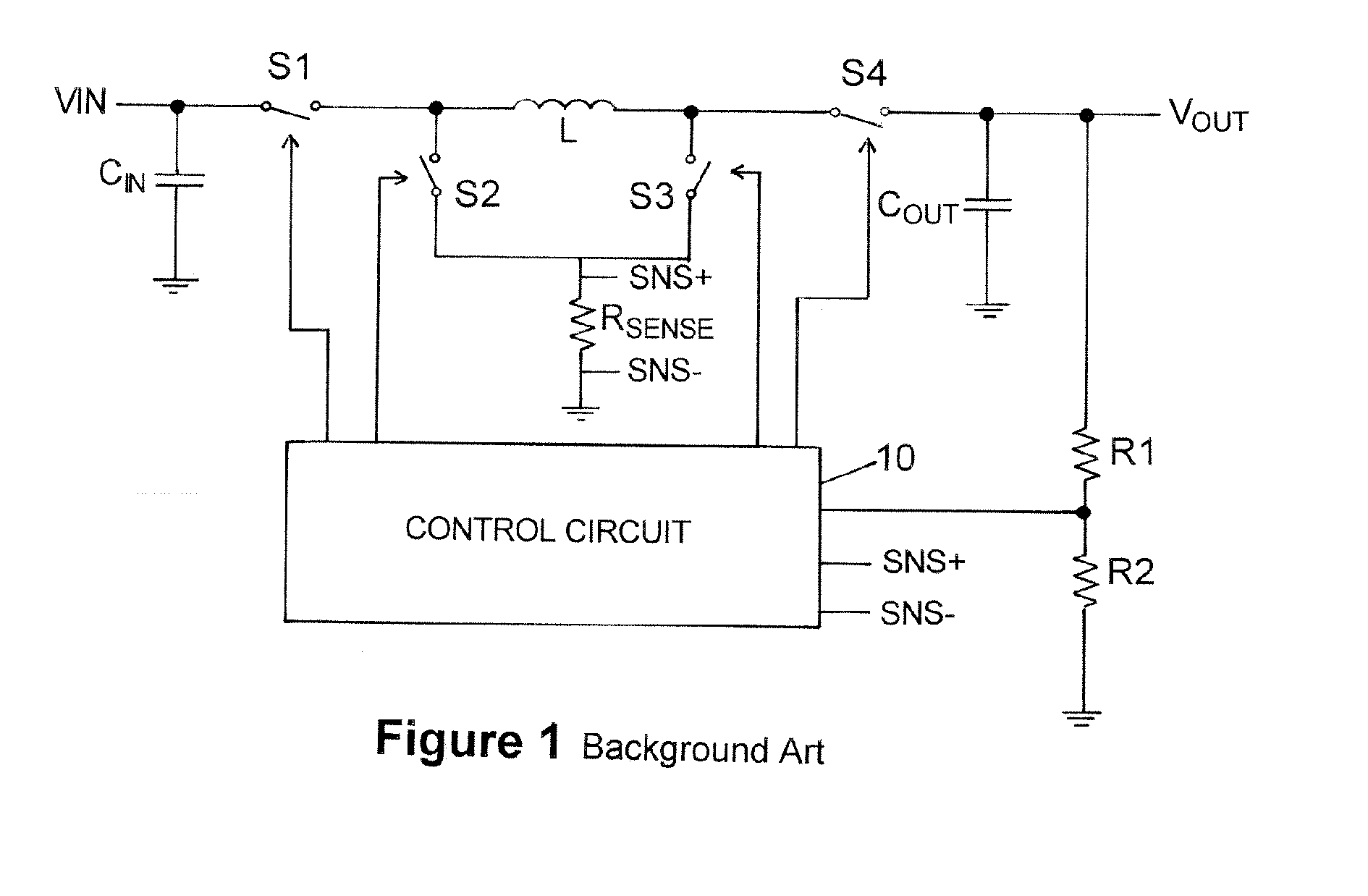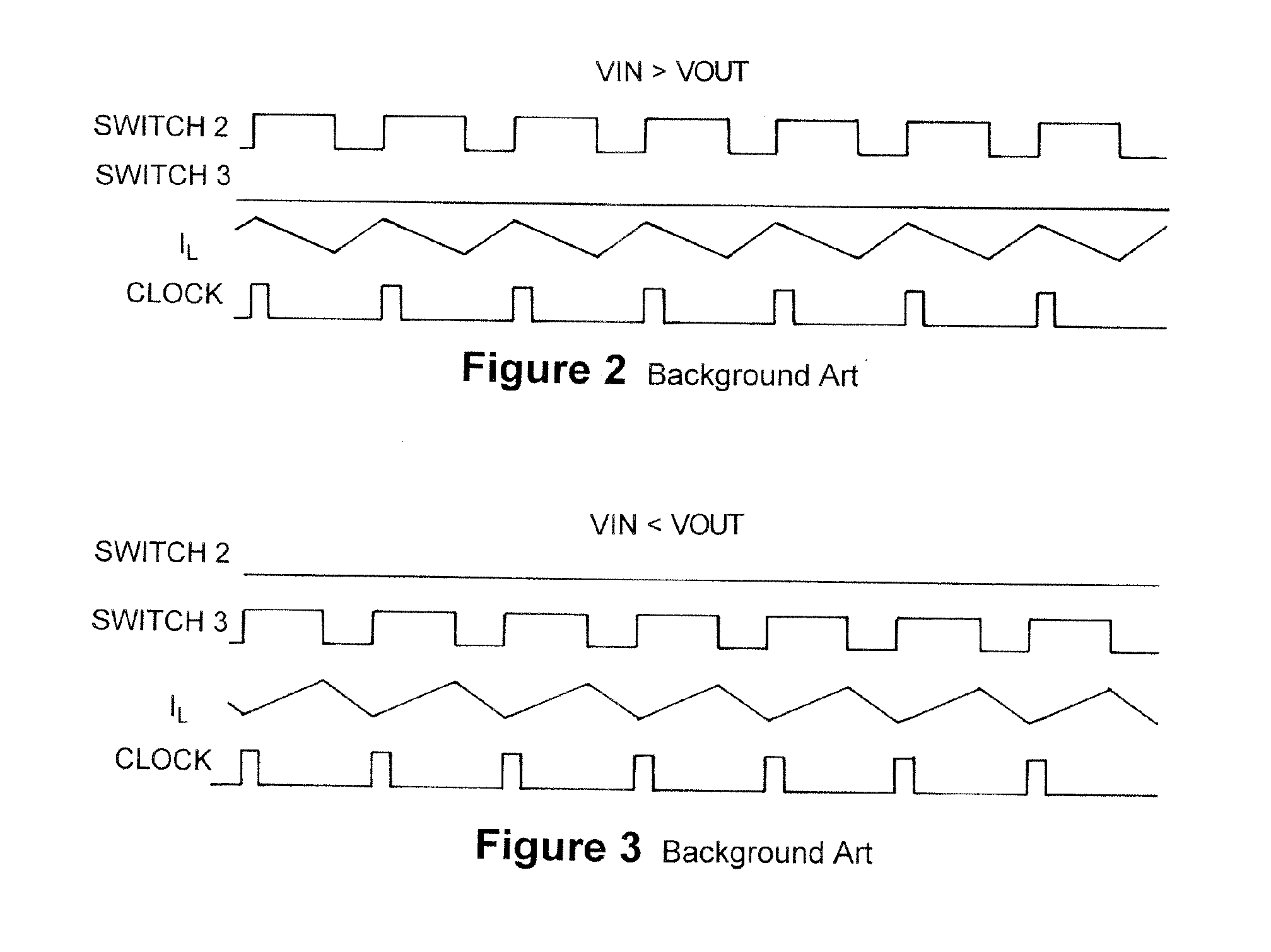Switching scheme for step up-step down converters using fixed frequency current-mode control
a technology of fixed frequency current and switching regulator, which is applied in the direction of power conversion systems, dc-dc conversion, instruments, etc., can solve the problems of increasing electromagnetic interference (emi) and not so well
- Summary
- Abstract
- Description
- Claims
- Application Information
AI Technical Summary
Benefits of technology
Problems solved by technology
Method used
Image
Examples
Embodiment Construction
[0048]The present disclosure will be made with an examples of a switching regulator control arrangement shown in FIG. 6. It will become apparent, however, that the concepts described herein are applicable to any control scheme for controlling any power supply circuit for providing an output voltage or current above, below or equal to the input voltage or current.
[0049]As shown in FIG. 6, an exemplary step up-step down switching regulator 100 of the present disclosure includes inductor L and switches S1-S4 arranged to provide connection of the inductor L to input node VIN, output node VOUT and a ground node in boost, buck and buck-boost modes. When the input voltage VIN is well above the output voltage VOUT, the switches S1-S4 are controlled so as to set the regulator into a buck mode of operation. When the VIN is well below the VOUT, the switches S1-S4 are controlled so as to set the regulator into a boost mode of operation. When a difference between the VIN and the VOUT is within a...
PUM
 Login to View More
Login to View More Abstract
Description
Claims
Application Information
 Login to View More
Login to View More - R&D
- Intellectual Property
- Life Sciences
- Materials
- Tech Scout
- Unparalleled Data Quality
- Higher Quality Content
- 60% Fewer Hallucinations
Browse by: Latest US Patents, China's latest patents, Technical Efficacy Thesaurus, Application Domain, Technology Topic, Popular Technical Reports.
© 2025 PatSnap. All rights reserved.Legal|Privacy policy|Modern Slavery Act Transparency Statement|Sitemap|About US| Contact US: help@patsnap.com



